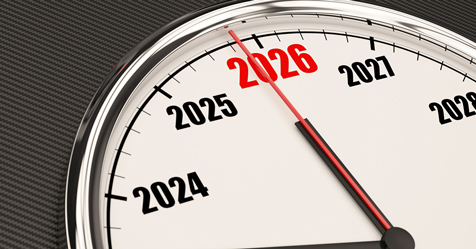7 Ways to Prepare Your Facility for a Hurricane
Hurricane Ian reminds facilitators on the U.S. coasts to take critical preventative steps.
Hurricane Ian, currently building strength and heading for Florida, serves as a critical reminder to facility managers in hurricane-prone zones to be prepared for such storms.
Despite a hurricane’s tremendous force, it’s important not to assume that all is lost. There are several things you as a building facilitator can do to help prevent damage, injury, and the loss of life in the event of a hurricane.
According to the National Oceanic and Atmospheric Administration (NOAH), September tends to be the peak hurricane season for the Atlantic basin, with most activity occurring between mid-August and mid-October. With storms already brewing, you’ll want to act now to be ready. Here are seven ways that you can get started with hurricane preparedness for your facility.
1. Check Your Building’s Roof
Your building’s roof is an element that’s highly at risk during a hurricane. You’ll want to have it professionally inspected several times a year, particularly after storms, to make sure that it’s free of defects and damage. Check for tears, cracks, debris, loose materials, and standing water.
You’ll also want to make sure that any equipment on the roof, such as generators or air conditioners, are properly secured with hurricane-force winds in mind.
Lastly, be sure to also check any existing skylights for cracks or poor installation.
2. Bolt Down Outdoor Objects
Objects outside your building can become dangerous projectiles during the high winds of a hurricane or tropical storm. Be sure that all signs and other objects, such as outdoor furniture and trash cans, are bolted to the ground. Check throughout the year to make sure these items remain secure.
3. Invest in Backup Power
A commercial generator is your best defense again electrical power outages caused by a storm. Generators can save business productivity, perishable supplies, and, in many cases, human lives. They also help keep lines of communication open and operating during an emergency.
Remember to always follow the manufacturer’s instructions and recommendations for operating and maintaining the unit. Portable generators must be operated outside to prevent deadly carbon monoxide fumes. Never operate a portable unit indoors, even if you think the space has significant ventilation.
4. Ensure the Integrity of Your Doors and Windows
Windows and doors are crucial protection for your building during a storm. If they are damaged, they can further damage your building when a hurricane hits.
Make sure door brackets, hinges, nuts, and bolts are tightly secured and not broken. Check doors for dents, warps, and rust.
All windows should be protected with impact-rated glass and, if possible, shutters. The shutters should be tested on a regular basis. Windows should be inspected for damage to the glass or the gaskets to prevent breakage and leakage. If shutters are temporary (such as planks of plywood), keep them stored flat in a dry location.
All irreparable doors and windows must be replaced.
Both doors and windows have wind ratings. If your building is in an area at risk from hurricanes and tropical storms, invest in those with the highest ratings available.
5. Review Your Building’s Property Insurance
Review your insurance policies to ensure that you have adequate coverage for your building. This includes the equipment and other property within the building as well as the structure itself.
6. Know How to Evacuate
The best way to save lives from the forces of a hurricane is to get out of its way. Be sure to know the evacuation routes for your building’s location. Communicate to your occupants well before a storm is on its way what those routes are and how to vacate the building, as well as the area under threat.
7. Put a Plan in Writing
Create, in writing, a hurricane disaster plan. Add the steps to your building’s manual of policies and procedures. Make sure that all people involved in the plan have access to it, understand their roles, and know how and when to go into action with their assigned duties. Keep the information when you can access it quickly. Make sure a physical copy of the plan exists, as you might not be able to access digital information during a storm outage.
To learn what to do after your facility experiences a hurricane, check out Hurricane Risks Don’t End Once the Storm Is Over.


